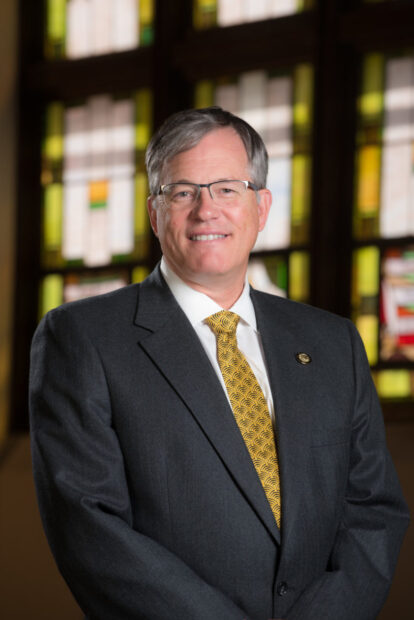In March I visited with a group of students at Sandpoint High School. Having read coverage of a student presentation about go-on rates, I wanted to learn about student choices for life after high school firsthand. The visit enhanced my perspective on the progress we’re making and the challenges we still face in changing Idaho’s college-going culture.

As the students pointed out, Sandpoint High has achieved higher “go on” rates than the Idaho average (60 percent compared to the state average of 46 percent). That success is attributable to student ambition and preparation, strong administrative support, and close-by opportunities for higher education. Not all the students I met with want to attend college, but most expressed a belief in higher education as essential for a rewarding career.
What stands in their way? Among a variety of factors, a couple stood out: cost and confusion about process.
It’s not surprising that cost was top of mind for students – in a comparatively low-wage state, even highly affordable college experiences represent a significant investment. Students are thinking about how they will juggle work and school, how they will approach financial aid, how they will handle student loans. A January 2017 update to our “Life After High School” study by the James A. and Louise McClure Center for Public Policy Research highlights the disparity in college enrollment between high-income and low- and middle-income students.
A complex application and admissions process also discourages even highly motivated students. Students are often working and contributing to family responsibilities, on top of their academic work. They might not have someone in their family experienced with college admissions to offer on-the-spot assistance. Admissions, financial aid, college visits, housing, and registration are all potentially tricky process points to navigate, especially in the crowded timeline of a busy senior year. One student told me, “It puts a lot of stress on our shoulders.” Under that stress, small concerns become magnified: Hurdles big and small can lead to stumbles on the way to higher education.
We’ve taken several steps to make our application and admissions processes easier for prospective students. The Direct Admissions program has simplified admissions, and most Sandpoint students were encouraged by the program. The work counselor Jeralyn Mire and principal Tom Alberton at Sandpoint High are doing to guide students through to college and careers is laudable. But our university and our state can clearly partner more effectively with the K-12 system and families. At UI, we’re thinking about pilot programs to connect with students and families at an even earlier age. And we are continuing to optimize our processes, our communications, and our scholarship programs.
We also need to work together as a state on communicating effectively about cost and value. At UI, we stress looking beyond the “sticker price” to understand total cost after financial aid and scholarship support. About one-third of our students don’t take on student loan debt. For those that do, I put it in these terms: You could forsake college and borrow $25,000 to buy a new vehicle; its value drops as you drive off the lot. That same money, though, when invested in a college education, will generate returns many times over, up to $1 million more over the course of a career. That’s a better long-term investment – an investment in yourself.
We need to continue having those conversations. The aspirations and concerns from Sandpoint High students are broadly shared across our state. If we apply the same can-do attitude and perseverance I witnessed from those Sandpoint High School students, I am confident we can turn our problems into progress.
Written by University of Idaho President Chuck Staben.
